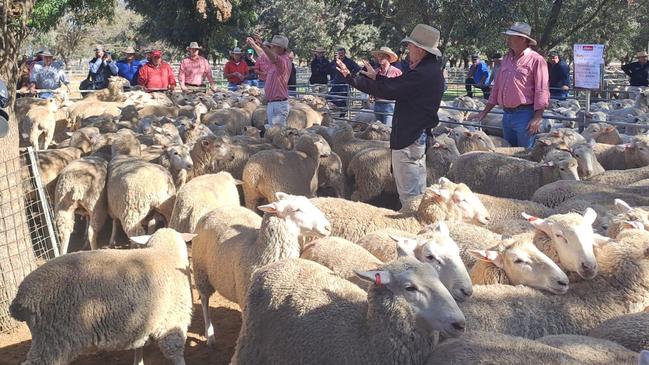Why Victorian wool production is going backwards
Victoria used to be a wool production powerhouse but new predictions show a downturn.
Victoria is contributing less and less to the national wool clip as producers turn away from Merinos and even sheep altogether.
Figures released by the Australian Wool Production Forecasting Committee predict volumes will be up nationally for the current selling season but are expecting a dip of 5.3 per cent from Victorian sheep flocks.
And in analysis to be released later last week, it projects there will be a further fall of 5.2 per cent in wool production in 2023/2024 to just 66.2 million kilograms.
In 2021/22, Victoria produced 73.9 million kilograms of wool, or about 23 per cent of Australian’s wool cut.
Committee chairman Stephen Hill said the fall in Victorian production could be attributed to “the extremely wet spring, which makes farm management practices more challenging”.
“There has also been increased cropping in key wool areas, displacing sheep production, and there is also the impact of some producer decisions to run more composites and crossbred lamb production systems,” Mr Hill said.
“This trend is forecast to continue in Victoria for the 2023/2024 season.
“Cropping and a move to composites are expected to continue the pressure on wool production in Victoria and, coupled with the potential return of El Nino in the second half of 2024 and possible unfavourable sheep meat prices maintaining.”

Victoria will remain the second biggest wool-growing state in the nation, but production will slip from 73.9 million kilograms in 2021/21 to 70 million kilograms in 2022/23 and even further to 66.3 million kilograms next season.
In comparison, the biggest wool growing state – NSW – is expected to see a lift of 5 per cent year on year to produce 119 million kilograms or more than a third of the 328 million kilograms for the 2022/2023 selling year.
WoolProducers Australia president Steve Harrison questioned the size of the fall in wool volumes from Victoria but acknowledged there were less people wanting to run wool cutting sheep.
“The whole issue is around price and we need more for our wool to stop the leakage away from the industry,” Mr Harrison said.
“Are people changing breeds to shedding sheep or to composites?
“You would think that is part of it but perhaps they are moving away from sheep altogether.
“What we do know is that it could be a pretty challenging season selling Merino rams this year.”
Meanwhile, the Eastern Market Indicator closed last week up slightly at 1308c/kg clean, almost 100c/kg down on where it was this time last year at 1401c/kg.




